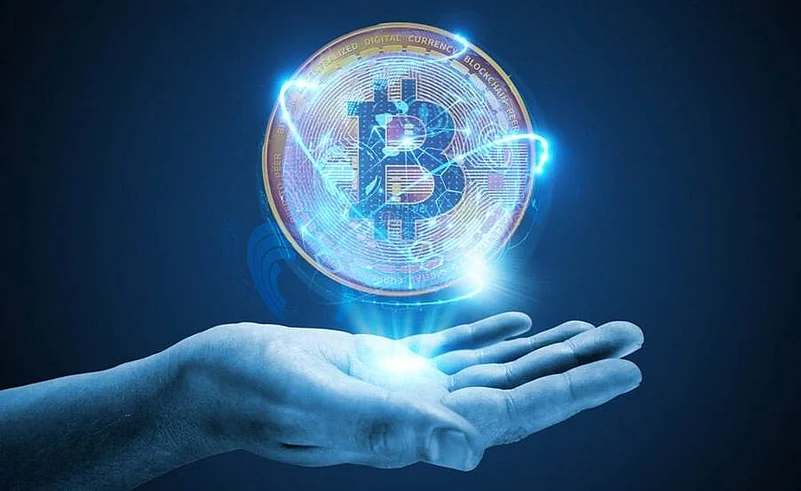With the new digital high-speed era, ownership no longer means physical possessions such as land, gold, or paintings. With the advent of digital assets, ranging from financial products to virtual property and intellectual property, our understanding of and management of ownership have evolved. But with this come a few problems, including security threats, fraud, and transparency issues.
Blockchain technology is revolutionizing asset management by providing a secure, transparent, and decentralized digital ownership platform. With the world accelerating towards a digital economy, it is important to know how blockchain is revolutionizing asset management.
Understanding Digital Ownership in the Blockchain Era
Historically, assets like land, stocks, or concepts of thought have been written down on paper or contained in one database. These systems always resulted in inefficiency, forgery, and distrust. Like an instance of property transfer, ownership came with bureaucratic documentation, lawyers' signatures, and middlemen.
Blockchain alters this by offering an immutable, distributed ledger where possession is publicly recorded. Blockchain-based records cannot be erased or manipulated, unlike conventional systems, and this provides assurance and trustworthiness. This allows assets to be managed more effectively, and the likelihood of fraud and human error is eliminated.
How Blockchain is Transforming Asset Management
1. Tokenization of Assets
One of the primary innovations that allow for digital ownership is tokenization. Tokens transform real assets into digital units recorded on a blockchain. The tokens symbolize ownership and may be transferred easily, exchanged for something else, or fractionalized.
For example, real estate assets, art pieces, or even music royalties can be tokenized. Instead of needing to carry an enormous capital expenditure in order to purchase a full property, one can now purchase fractions of it in the form of digital tokens. This more equally shares the ownership of the assets.
2. Increased Transparency and Security
Blockchain functions on an open platform whereby no single person runs the system. Each transfer of ownership and transaction is documented on an open book that is accessible to all the parties involved. This openness minimizes the chances of fraud since each transaction will be authenticated by the network before it is added to the blockchain.
Conversely, conventional asset management uses a variety of middlemen, i.e., law firms, banks, and government agencies, who are likely to delay moves and raise fees. Blockchain replaces middlemen with automation, speeds up transactions, and maintains safety.
3. Automated Transactions Using Smart Contracts
Smart contracts are programmable contracts executed automatically in blockchain. They activate a contract automatically as and when specific conditions are fulfilled. Smart contracts in asset management automate the transfers of ownership and lease deals, as well as dividend payments, without the need for intervention.
For example, in property sales, smart contracts can transfer ownership automatically upon confirmation of payment, eliminating the need for third parties to verify this. This saves time, reduces costs, and reduces the risk of litigation.
4. Reducing Counterfeit Assets and Fraud
Counterfeiting is a huge issue in industries like luxury items, art, and digital media. Blockchain comes in as the answer by giving an unalterable record of ownership that confirms asset authenticity.
To illustrate, electronic certificates on a blockchain can certify artwork to prevent customers from being fooled by fakes. Likewise, traceability in supply chains for luxury brands can utilize blockchain to guarantee product authenticity for all levels of production and supply.
5. Global Financial Inclusion and Accessibility
Blockchain offers access to individuals who were otherwise excluded from mainstream financial systems. Bank facilities are not available in most parts of the world, and assets such as land or stocks involve cumbersome legal procedures. Blockchain allows individuals to store and transfer assets electronically without the involvement of banks and government offices.
Besides, assets via blockchain can be accessed anywhere globally, regardless of location. This is especially important in a time when digital economies are on the rise and cross-border transactions are becoming more prevalent.
Challenges and the Road Ahead
While blockchain is revolutionizing asset management, there are obstacles. Among the problems that need to be overcome are scalability, regulatory, and the adoption hurdle. Governments and banks are still working on frameworks that will regulate digital ownership while simultaneously ensuring security and compliance.
Additionally, public education on blockchain and its potential to help is imperative. Most of the population still thinks of blockchain as being synonymous with digital money and does not recognize its potential to revolutionize industries such as property, healthcare, and intellectual rights. Greater knowledge and awareness will be key towards mass adoption.
Conclusion
Blockchain is revolutionizing the future's digital ownership and providing a more efficient, secure, and transparent asset management. From smart contracts and tokenization to preventing fraud and global access, blockchain is opening up new opportunities for business and individuals across the globe.
As technology continues to evolve and regulatory systems mature, blockchain-based asset management will continue to go mainstream, resulting in a future where digital ownership is not only a possibility but an international standard.














